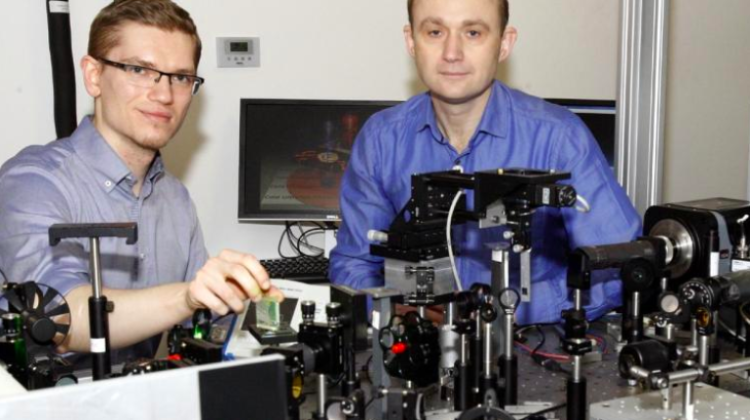A breakthrough coming? Polish method for ultra-fast information recording

Polish-Dutch team of physicists managed to get past the speed and efficiency barrier of information storage. As a result, data on computer disks could be written a thousand times faster than now, and in addition, computers would be more energy efficient.
Polish-Dutch team of researchers has found a way to make writing information in computers much more efficient. The method is called ultrafast nonthermal photo-magnetic recording. Groundbreaking research was published in the prestigious journal "Nature" (http://dx.doi.org/10.1038/nature20807).
"With our solution, a near future can be a computer that will not only run faster, but also use less energy thanks to efficient memory. For example. Through the use of our technology, 3D graphics, rendering (processing - ed. PAP) which now takes tens of minutes, would be generate on a manner of seconds. Laptops would work longer without charging" - explains in an interview with PAP Krzysztof Szerenos, one of the authors and a doctoral student at the Faculty of Physics, University of Bialystok.
COOL CALCULATION
According to the young physicist, the true potential of the solutions will be particularly noticeable in large server rooms and data storage and processing centres. In such places, savings - in terms both of time and of energy needed to store and process data - would be really significant.
"Currently, as much as 5 percent global electricity production is consumed by such IT centres, and it will soon rise to 7 percent" - said research leader Dr. Andrzej Stupakiewicz from the Faculty of Physics, University of Bialystok. He noted that during recording large amounts of heat are emitted - so large that in order to protect the data, extra energy is needed for cooling of devices.
Meanwhile, according to estimates of researchers from the University of Bialystok, with the new method during information recording (as well as reading), the medium temperature will rise only 1 degree C. In this case, cooling is not necessary. The system operates at room temperature.
DISCWORLD
Andrzej Stupakiewicz reminded what recording information on a magnetic disk involves. "Imagine that there are a lot of tiny magnets. Each magnet has a north and south pole, the direction of magnetization. If we turn one magnet, we change its binary value - for example from 0 to 1. This way we record information" - he described.
He added that in commercially available memories magnetization state is usually changed with magnetic field or electric current. This method, however, inevitably results in materials heating up. And this leads to energy losses.
In addition, the existing methods have physical limitations when it comes to write speeds - changing the bit status in the fastest available RAM memories takes a few nanoseconds (nanosecond is a billionth of a second). The new method allows to overcome the existing write speed barriers.
THROW A GARNET AT THE IT MARKET
Polish researchers have shown that there is a non-conductive material (cobalt-substituted yttrium iron garnet, YIG:Co), in which the state of magnetization can be changed using ultrafast light pulses, and it is reversible. Just one laser pulse is sufficient to switch one bit in such material.
"Compared to the fastest currently used memory we can get a thousandfold increase the in read and write speed" - compared Andrzej Stupakiewicz. Materials with garnet structure are commercially available and - according to scientists - it would not be a problem to improve their parameters in order to optimise storage and use them on a mass scale.
IMPULSE FOR SERIOUS SAVINGS
The researchers report that when writing 1 bit of information the system consume very little energy - up to 10 000 times less the latest STT-MRAM technology, and even a billion times less than the current hard drives.
It has been known for some time that magnetic recording can be perform using single laser pulses. A decade ago a group of researchers from the Netherlands discovered metallic material with such properties. However, because of very strong light absorption, this material heated up significantly during writing. "Now, in collaboration with the same team from the Netherlands, we have demonstrated that there is a magnetic dielectric, which is transparent and does not heat up under the influence of laser pulses, and recording is even faster" - said Krzysztof Szerenos.
The research of team from Bialystok was carried out with the support of the National Science Centre. Now Polish scientists - together with the Dutch researchers - are applying for an EU grant for the development of research. Over the next 5 years they want to build a prototype system using the new ultrafast nonthermal photo-magnetic recording technology. They hope that the new devices may appear on the market in 10 years.
PAP - Science and Scholarship in Poland, Ludwika Tomala
lt/ agt/ mrt/
tr. RL
Przed dodaniem komentarza prosimy o zapoznanie z Regulaminem forum serwisu Nauka w Polsce.


















